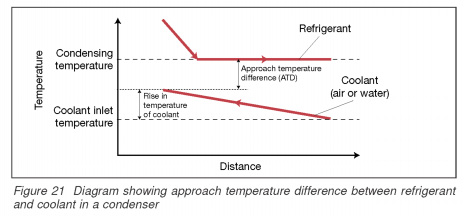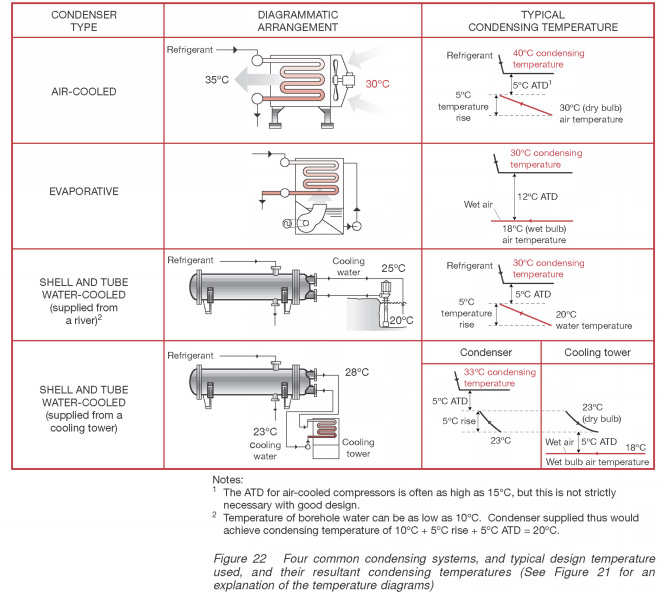Approach of a Temperature Difference (ATD)
To transfer heat from the refrigerant coolant temperature difference between the two, and that is the approach of a temperature difference (ATD), shown in Fig. 21. It must be large enough to provide a flow of heat, necessary to achieve the required system capacity. However, to achieve maximum efficiency, ATD should be minimized, as this will reduce the temperature of the Elevator system. A reasonable balance between these two factors must be taken to ensure adequate capacity, but on reasonable operating costs and environmental impact.

The inlet temperature of the coolant, as a rule, not controlled (e.g. ambient air temperature or the temperature of the water), but the coolant should be chosen as low a temperature as possible. The lower the temperature of the heat carrier of the ATD, the more effective the system will be. Coolant temperature, naturally increases, as it is cooled by the refrigerant value of this temperature increase depending on the flow rate and the type of coolant is used.
For maximum effectiveness, this temperature increase should be small, because it means that the condensing temperature below. However, higher flow rates required need more fans and/or pumps, which also consume energy. As always with cooling systems, a reasonable balance (i.e. the optimal design) must be found between conflicting requirements. On Fig. 22 shows some typical design values for ATD, coolant temperature and the resulting condensation temperature for the four common types of capacitors.

There are three types of capacitor wide application:
- air cooled (using ambient air);
- with water cooling (using a network, river or cooling water);
- evaporative cooling (using ambient air and water recycling).
In the last two types take advantage of the lower wet bulb temperature of the environment and greater heat transfer effect of the water, and therefore work with below the temperature of condensation. When comparing different capacitor types, power requirements associated fans, pumps and heaters must be taken into account. In General, systems under 100 kW performance air-cooled condensers, if there is no space or limit noise...
|


